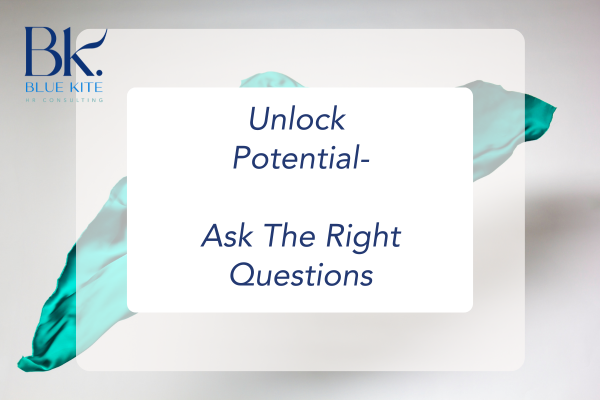The real story isn’t in the CV – it’s in what you ask
Want better hires? Start asking better questions. Learn how to hire for potential, not polish – and move beyond keywords to real human connection.
When the Resume Doesn’t Quite Add Up
You’re reviewing applications for a new role. And you are in a quandary!
One candidate has the right skills – but a two-year career gap.
Another made a sideways move last year that doesn’t quite align.
A third has no degree, but glowing endorsements and a portfolio full of grit.
Do you shortlist them for an interview – or look past them?
For many hiring teams, the résumé is still the gatekeeper. It offers a quick, seemingly objective way to narrow down a pile of names into a shortlist of contenders.
It’s familiar.
It’s efficient.
And… It’s flawed.
Let me explain…
Not every strength fits neatly on a sheet of paper.
A résumé can tell you where someone has worked, but not how they think. It lists qualifications, not character. And it rarely captures the experiences that shape resilience, creativity, or emotional intelligence – the very traits that often matter most in fast-moving, people-first environments.
In this age of automation, it’s especially tempting to let AI or keyword-matching software do the early work for you. But these tools are only as good as the assumptions they’re built on. And when those assumptions favour linear paths, traditional credentials, or uninterrupted timelines, you risk filtering out people with something even more valuable: perspective.
And therefore, if you want to build a team that’s capable, curious, and equipped for the real world – you need to look beyond the résumé.
Workplace mental health is finally getting the attention it deserves. But not all experiences of stress, burnout, or emotional strain are the same – especially for those carrying an invisible load.
Why Resumes Still Rule (and Why That’s a Problem)
Many hiring processes still begin – and end – with the résumé. It’s the quickest way to scan for experience, shortlist candidates, and keep the process moving. In time-poor environments, it’s no surprise that a well-formatted CV or an optimised LinkedIn profile gets a foot in the door.
But speed doesn’t quite equal insight.
While a polished résumé might reflect access to coaching, privilege, or a career path that followed a predictable arc, it may not fully reflect potential, values, or how someone handles complexity. And when you rely too heavily on résumés – or the tech that scans them – you risk missing exactly those things.
Add AI and automation into the mix, and this gap can widen. Keyword-matching software and algorithm-driven shortlists promise efficiency. But these tools are trained on past data – often replicating existing biases. That means candidates with non-traditional career paths, career breaks, or culturally different ways of expressing achievement might never make it past the first filter.
Your brief may be to hire a diverse team. But look at the systems you rely on, because they could be rewarding sameness.
Speed helps you filter quickly – but it won’t help you understand deeply.
A resume might check the boxes, but insight lives in the story behind it.
When hiring becomes a box-ticking exercise, you overlook the human behind the application – and all the experiences that don’t fit neatly in a dropdown menu.
What Resumes Don’t Tell You
Résumés are designed to shine a spotlight on the highlights of one’s professional journey. It favours job titles, achievements and certifications, all distilled into bullet points. But real careers aren’t bullet points. They’re stories. And the most meaningful parts often don’t make it on to the page.
What gets left out?
Resilience: The CV might show a two-year gap. It won’t show the grit it took to care for a sick parent, survive a redundancy, or restart after a burnout.
Emotional intelligence: Empathy, self-awareness and team dynamics don’t come with a certificate – but they’re critical to culture and performance.
Adaptability: A “career pivot” might look inconsistent on paper. In practice, it can reflect learning agility, courage, and a growth mindset.
Values alignment: résumés tell you what someone has done – not why. And that “why” often speaks volumes about motivation and integrity.
Cultural contribution: Hiring for “fit” can reinforce bias. Looking for what a candidate could add to your culture – through lived experience or perspective – is far more powerful.
A résumé gives you a list of milestones. It rarely shows what shaped someone along the way. and that’s where the real value often lives.
Ask, Don’t Assume
A two-year career break that might have seemed like a red flag – it doesn’t always mean the candidate lost momentum. A sideways move doesn’t imply a lack of ambition. Lack of industry experience doesn’t mean they won’t deliver in the role.
But you won’t know that if you don’t ask.
Too often, we’re guilty of making assumptions on what’s missing – or unfamiliar – on a résumé. But the gaps and pivots often carry the richest insight: about what someone values, what they’ve overcome, and how they operate under pressure.
This is where human conversations make all the difference.
Instead of scanning for red flags or attempting to fill in the blanks yourself, ask:
- “Tell me about this time you chose to leave this role / take a break / try something new. What drove that decision. What did that experience give you”
- “What’s a choice you made in your work life that helped you grow – even if it wasn’t obvious on paper?”
- “What would a team member from your last team say you brought to the culture?”
Questions like this go beyond competence – they open the door to context, character, and clarity.
Curiosity isn’t soft. It’s strategic. And when well directed, it can surface the kind of qualities no keyword scan will ever catch.
Hire or Trajectory, Not Just History
A standout résumé might show steady progress, recognisable job titles, and years of experience. But none of that guarantees the person behind it will thrive in your team, your culture, or your challenges.
Past success doesn’t always predict future impact – especially in roles that demand empathy, learning agility, or cross-functional thinking.
That’s why it pays to hire for trajectory – not just history.
| Trajectory is about where someone is headed, how they think, and what they’re building in themselves. |
It shows up in candidates who:
- Taught themselves new skills during a career break
- Changed industries to align with purpose
- Tool roles outside their comfort zone to grow
- Stepped back temporarily for health, family, or reflection – and returned more focused.
These aren’t liabilities. They’re signs of resilience, clarity and maturity.
One of the most powerful shifts a hiring team can make is to stop asking, “Do they tick every box?” and start asking “Are they growing in a direction that matches where we’re headed?”
More than following a candidate’s path, you need to recognise their momentum and how it lines up with your mission.
Practical Ways to Look Beyond the Résumé
It’s one thing to say, “hire with curiosity”. It’s quite another to build hiring processes that actually make space for it.
If you want to spot potential – not just pedigree – you need to change how you attract, assess and engage candidates.
Here’s where you can start:
- Rewrite job ads to focus on impact, not checklists.
Instead of “5+ years in a similar role”, ask for “experience with improving systems or solving challenges in messy, high-stakes environments”. You’ll attract a broader range of candidates – and encourage self-selection based on capability, not just credentials.
- Train hiring managers to spot potential.
Curiosity and growth mindset doesn’t always come across in a traditional interview. Equip interviewers to ask deeper questions and probe for adaptability, values and willingness to learn.
- Use structured interviews – but leave room for stories.
Consistent questions are essential because they reduce bias. But make sure you make time for conversation. Leave space for candidates to explain gaps, pivots, or motivations in their own words.
- Run a dual-track screening process
Even if your workflow now uses AI, include a human review to balance your process. Create checkpoints where people – not algorithms – make the call on nuance, non-linear paths, or unique strengths.
- Reward potential internally, as well
The need to fill positions doesn’t always mean you have to hire new talent. It’s equally an opportunity for you to recognise the value of your existing employees whose résumés may have changed in ways that might not show up. Promote on trajectory, not tenure alone.
When your hiring process is built to hear people – not just sort them – you get better candidates and you build a better culture.
| Try this:
Next time you’re hiring for an operations or coordination role, you could skip the degree requirement and drop the “5+ years in corporate environments”. Instead ask for real-world experiences: “Have you improved a process, managed competing priorities, or worked across teams – paid or unpaid?” You might hear from a candidate who has led logistics at a community food bank or organised national events as a volunteer. Not traditional experience – but high-impact all the same. The results may surprise you. |
The Resume is a Starting Point – Not a Verdict
Hiring isn’t just about filling a role. It’s about shaping the workplace you want to build and grow.
If you continue to prioritise clean career paths, polished formatting, and keyword-perfect application, you’ll keep hiring the same kinds of people – and wonder why your teams lack perspective, fresh ideas or resilience.
The truth is, the best candidates don’t often tick every box.
They’ve taken detours. Started over. Built skills outside the system.
They’ve learned from life – not just from jobs.
So ask yourself:
| Are we hiring for pedigree, or for potential?
| Are we screening for sameness, or searching for substance?
Because when you choose:
- curiosity over criteria,
- potential over polish,
- depth over data points
you build a workplace that’s smarter, stronger and more human.









